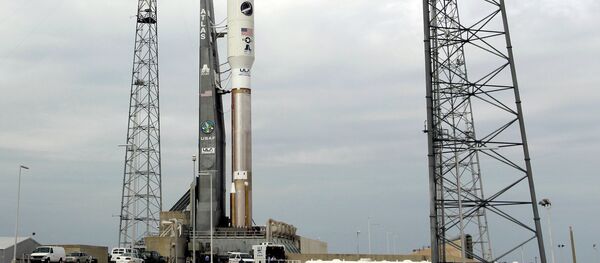Wilson's remarks were made in response to a September 10 directive from Deputy Defense Secretary Patrick Shanahan, who reached out to Wilson and Undersecretary of Defense for Research and Engineering Michael Griffin to develop a proposal on how to best establish the Space Force, according to site Space News.
Although Wilson did offer a 16-page, detailed concept on how military space forces, programs and agencies could transition into a Space Force department once approved by Congress, she didn't hold back on criticism.
"[T]here is no need to establish an Assistant Secretary of Defense for Space, nor is there any benefit to either establishing an additive agency or moving programs to a temporary holding organization," Wilson writes before diving headfirst and outlining her proposal, to create a Space Department within an already established office in the Air Force.
"This proposal establishes a clear mission, directly related to the strategic problem we are trying to solve. It preserves close ties to the warfighter, ensures strong authorities and avoids unnecessary delays and disruptions to ongoing programs," Wilson writes before diving headfirst into the matter.
Rather than creating a new agency entirely, Wilson suggests that the already established Air Force Space Rapid Capabilities Office (AFSRC) be the one to transition into the Space Development Agency, a satellite-buying firm pushed by Shanahan. "This office exists now and has the personnel and expertise to develop and field the warfighting capabilities needed by US Space Command," she writes.
And the force can't be a complete loner either; it must be able to develop deeper ties with the intelligence community, Wilson notes, calling for the head of the National Reconnaissance Office to also take the top seat at the AFSRC.
"That proposal must contain all of the elements needed for space to be fully successful as a department," she says. "It must maintain a close connection between acquisition and the warfighter and it must deepen the already close connection between military space and the space elements of the intelligence community."
Wilson also suggests that the new force would require 13,000 new personnel. With the Pentagon's fiscal year 2020 budget proposal expected to include plans for the Space Force, Wilson indicates in the memo that the Space Force project could go into service by fiscal year 2021, as long as the green light is given.
News of the memo came after Wilson gave a speech on Monday at the Air Force Association's annual symposium, Space News reported. At the conference, Wilson alluded to her own September memo, calling it "bold," but grasping the essence of US President Donald Trump's wishes.
"As airmen, we have a responsibility to develop a proposal for the president that is bold and that carries out his vision," Wilson told attendees at the event, where she also remarked that the US Air Force needs to see a 25 percent growth in servicemembers by 2030 in order to keep up with the times.
Trump first triggered a collective raising of eyebrows regarding the Space Force earlier this year in March when he attended a military event at Miramar Air Station in California, Defense News reported. At that time, Trump said that a new national security strategy "recognizes that space is a war-fighting domain just like the land, air and sea."




